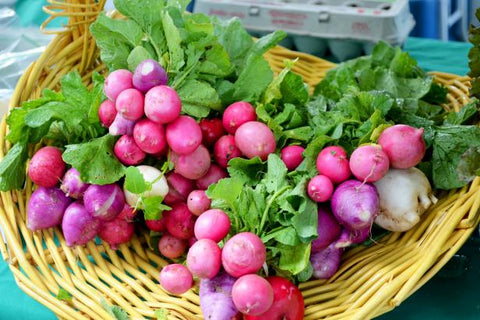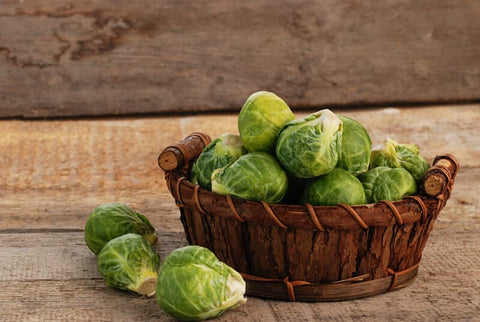Raised bed gardening has emerged as a popular choice for gardening enthusiasts across the East Coast of America, offering numerous benefits and opportunities for creative expression. From setting up your garden to harvesting your bounty, this guide will walk you through the steps of cultivating your own thriving raised bed garden oasis.

Why raised bed gardening is gaining popularity in the region
In recent years, raised bed gardening has experienced a surge in popularity among East Coast gardeners, and for good reason. The controlled environment of raised beds offers several advantages over traditional gardening methods, including improved soil drainage, better pest control, and the ability to extend the growing season.
Building your raised bed
Whether you're a seasoned DIY enthusiast or prefer to leave it to the professionals, building a raised bed is a straightforward process. Follow step-by-step instructions to construct your bed or enlist the help of a skilled craftsman to bring your vision to life.
Testing your soil for pH and nutrient levels
Before planting, it's essential to assess the health of your soil. DIY soil testing kits are available for those who prefer a hands-on approach, or you can opt for professional testing services for more accurate results.
Amending your soil for optimal plant growth
Based on your soil test results, you may need to amend your soil to create the perfect growing environment for your plants. Adding organic matter such as compost and aged manure can improve soil structure and fertility.
Incorporating soil amendments based on test results
Different plants have varying nutrient requirements, so tailor your soil amendments to suit the needs of the crops you intend to grow. Incorporate amendments based on your soil test results to ensure optimal plant health and productivity.

Mulching and weed prevention
Mulching not only helps retain moisture and regulate soil temperature but also suppresses weed growth, reducing the need for manual weeding.
Types of mulch suitable for East Coast gardens
There are various types of mulch available, including organic options such as straw, wood chips, and compost. Choose a mulch that suits your garden's aesthetic and practical needs.
Strategies for controlling weeds without harmful chemicals
Chemical herbicides can harm beneficial insects and soil microbes, so opt for natural weed control methods whenever possible. Mulching, hand weeding, and using landscape fabric are effective strategies for keeping weeds at bay.
Choosing the Right Plants for Your Garden
Understanding the climate and growing conditions in East Coast America
The East Coast boasts a diverse range of climates, from the cool, maritime conditions of New England to the humid subtropical climate of the Southeast. Understand your local climate and growing conditions to select plants that will thrive in your area.
Hardiness zones and frost dates
Consult the USDA Plant Hardiness Zone Map to determine your garden's hardiness zone and average frost dates. Choose plants that are well-suited to your zone and plant them at the appropriate times to avoid frost damage.
Ideal vegetables, herbs, and flowers for the region
The East Coast offers a bounty of plant options for your raised bed garden, including classic favorites like tomatoes, peppers, and basil, as well as cold-hardy crops like kale, broccoli, and carrots.
Companion planting for pest control and improved yield
Companion planting involves pairing compatible plants to enhance growth and deter pests. Research companion planting techniques to maximize your garden's productivity and natural pest resistance.
Pairing compatible plants to maximize garden space
Strategically plan your garden layout to make the most of limited space. Pairing compatible plants with similar growth habits and nutritional needs can help maximize yields and minimize competition.
Repelling pests naturally with companion planting techniques
Certain plants have natural pest-repelling properties that can help protect your garden from common pests. Incorporate these plants into your garden design to ward off unwanted visitors without resorting to chemical pesticides.
Planting and Maintenance Tips
Timing your planting for success
Timing is everything in gardening, so plan your planting schedule carefully to take advantage of optimal growing conditions. Consider factors such as temperature, daylight hours, and frost dates when planning your planting calendar.
Spring, summer, and fall planting schedules
Take advantage of the extended growing season in the East Coast by staggering your planting throughout the spring, summer, and fall months. Plant cold-hardy crops early in the spring and extend your harvest into the fall with late-season varieties.

Extending the growing season with cold frames and row covers
Cold frames and row covers are valuable tools for extending the growing season and protecting plants from frost damage. Use these season-extending techniques to get a head start on spring planting and prolong harvests well into the fall.
Watering and fertilizing your raised bed garden
Consistent watering and fertilization are essential for healthy plant growth. Use proper irrigation techniques to ensure your plants receive adequate moisture without overwatering or underwatering.
Proper irrigation techniques to prevent overwatering and underwatering
Avoid common watering pitfalls by using irrigation methods that deliver water directly to the root zone of your plants. Drip irrigation, soaker hoses, and watering wands are all effective tools for efficient watering.
Choosing organic fertilizers for healthier plants and soil
Organic fertilizers provide essential nutrients to plants while improving soil health and fertility. Choose organic fertilizers derived from natural sources such as compost, fish emulsion, and bone meal for optimal results.
Pest and Disease Management
Identifying common pests and diseases in East Coast gardens
Be vigilant in monitoring your garden for signs of pests and diseases, as early detection is key to preventing widespread damage. Common pests and diseases in East Coast gardens include aphids, tomato hornworms, powdery mildew, and blight.
Natural remedies and organic pest control methods
Combat pests and diseases using natural remedies and organic pest control methods whenever possible. Beneficial insects, such as ladybugs and lacewings, can help keep pest populations in check, while neem oil and insecticidal soap are effective treatments for common garden pests.
Harvesting and Enjoying Your Garden Bounty
Harvesting the fruits of your labor is the culmination of every gardener's efforts, a time when you reap what you sow and celebrate the abundance of nature's gifts. In this section, we'll delve into the art of harvesting and savoring the delightful treasures from your East Coast garden.
Knowing when to harvest your crops for peak flavor and freshness
Timing is everything when it comes to harvesting your crops. You want to pick your vegetables and fruits at the peak of ripeness to ensure they're bursting with flavor and nutritional goodness. But how do you know when the time is right?
For tomatoes, look for vibrant colors and firm, yet slightly yielding flesh. Avoid picking them when they're still hard as a rock or overly mushy – you want that perfect balance of juiciness and sweetness.
When it comes to cucumbers, size does matter. Pick them when they're still firm and slender, before they turn into bloated behemoths that are better suited for pickle jars than fresh salads.
And let's not forget about everyone's favorite summer staple – the mighty zucchini. Harvest them when they're small and tender for the best flavor and texture. Once they start resembling baseball bats, you've waited too long.

Signs of ripeness for popular East Coast garden vegetables
Each vegetable has its own telltale signs of ripeness, clues that savvy gardeners can decipher with ease. From the subtle changes in color to the gentle give when you apply pressure, learning these signs is like unlocking the secrets of the vegetable kingdom.
Carrots, for example, are ready to be plucked from the earth when their tops start to peek above the soil line, signaling that the roots below are plump and ready for harvesting.
For leafy greens like lettuce and spinach, look for leaves that are vibrant green and crisp, with no signs of wilting or yellowing around the edges. And if you're unsure, give them a taste – if they're bitter or tough, they're past their prime.
Preserving and storing your harvest
Of course, not all of us can eat everything we grow in one sitting (though wouldn't that be the dream?). That's where preservation techniques come into play, allowing you to enjoy the fruits of your labor long after the growing season has come to an end.
Canning is a time-honored tradition that's making a comeback in modern kitchens. Whether you're making jam from freshly picked berries or pickling cucumbers for a tangy treat, canning allows you to capture the flavors of summer in a jar.
If you're short on shelf space (or just not a fan of boiling water baths), freezing is a convenient alternative. Simply blanch your vegetables to preserve their color and texture, then pop them in the freezer for a taste of summer whenever you please.
And let's not forget about drying, the oldest method of preservation known to humankind. Whether you're air-drying herbs for culinary use or making sun-dried tomatoes to add a burst of flavor to winter dishes, drying is a simple and effective way to extend the shelf life of your harvest.
Creative recipes and meal ideas to enjoy your garden bounty year-round
With a bounty of fresh produce at your fingertips, the culinary possibilities are endless. From garden-fresh salads to hearty stews bursting with seasonal vegetables, there's no shortage of ways to turn your harvest into delicious meals that will tantalize your taste buds and nourish your body.
Try whipping up a batch of roasted root vegetables tossed with olive oil and herbs for a simple yet satisfying side dish that pairs perfectly with any meal.
Or why not get adventurous and experiment with fermentation? Transform your excess cabbage into tangy sauerkraut or your surplus cucumbers into crunchy pickles – the possibilities are limited only by your imagination (and maybe the size of your fermentation crock).
Sharing the harvest with friends and neighbors
Last but certainly not least, don't forget to spread the wealth by sharing your garden bounty with friends and neighbors. Whether you're gifting them a basket of freshly picked produce or inviting them over for a garden-to-table feast, sharing the fruits of your labor is a wonderful way to build community and spread joy.
So go ahead, embrace the abundance of your East Coast garden and share the love – after all, there's no greater pleasure than seeing the smiles on the faces of those you care about as they enjoy the fruits of your labor.









